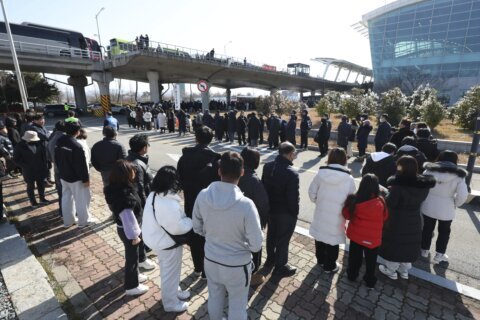Thanks to daylight saving time, twice a year we get to reset our clocks. On the second Sunday of March, the majority of Americans “spring” their clocks an hour forward, losing one hour overnight. Daylight saving time ends on the first Sunday in November, when we set our clocks back, gaining an extra hour. (Officially, it’s daylight saving time, not daylight savings time. But don’t feel bad if you thought there was an extra s. Far more people Google the incorrect phrase than the correct one.)
This seasonal time change is designed to increase the amount of daylight available after the traditional workday is over, but it can leave people groggy and tired for days afterward. Transitions into and out of daylight saving time can disturb people’s sleeping patterns, make them more restless at night and cause other health issues. Night owls tend to be more bothered by the time changes than people who like mornings.
That’s because your body’s own internal biological clock, called your circadian rhythm, can’t easily adjust to a new sleep schedule. Light is the most important signal for setting our body’s circadian rhythm, and abrupt changes to light, like what happens during the annual DST change, can disrupt our natural sleep cycles. Of course, the circadian clock affects more than sleep, also influencing things like heart rate, blood pressure, stress hormones and metabolism, which is why shifting sleep patterns can have such a profound effect on health.
[READ: How to Sleep Better.]
Sleep Issues and Daylight Saving Time
DST negatively affects our sleep because it abruptly changes our normal sleep schedules. It’s almost like giving yourself jetlag without going on a trip. Light is the most important signal our body receives for setting our sleep patterns. When light hits your eyes, a signal is sent to our brains that says it’s time to be awake.
Darkness tells your body to produce melatonin, a hormone that causes drowsiness and tells your body to sleep. But a sudden one-hour shift in the day will negatively affect our sleep quality, according to Dr. Muhammad A. Rishi, an associate professor of medicine at the Indiana University School of Medicine in Indianapolis and the vice chair of the American Academy of Sleep Medicine’s Public Safety Committee.
“The transition to daylight saving time, especially the spring switch in March, can have a negative impact on sleep duration and quality,” Rishi says. “Folks who are already short on sleep may experience the most adverse effects of the time change.”
Studies show that DST leads to a decrease in the quality and quantity of sleep and has daytime side effects like reduced cognition.
[READ: Best Over-the-Counter Sleep Aids and Sleeping Pills]
Daylight Saving and Heart Health
Researchers have found that there’s a spike in heart attacks and strokes during the first week of daylight saving time.
A study of hospital admissions across the state of Michigan found there was a 24% increase in heart attacks on the Monday following the switch to daylight saving time. In a study from Finland, researchers found that the overall rate of ischemic stroke was 8% percent higher during the first two days after a daylight saving time transition. The loss of an hour’s sleep may make people more susceptible to an attack, some experts say. When daylight saving time ends in the fall, heart attacks briefly become less frequent than usual.
Daylight Saving and Impaired Decision-Making
The sleep disruptions caused by changing the clock by a hour are felt particularly hard during the spring shift forward, and there is evidence that accidents increase directly following the time shifts. A study published in 2020 examining accidents at a healthcare facility found that work accidents caused by human error increased more than 18% following the spring time change and slightly less than 5% following the fall time change.
Researchers at the University of Colorado Boulder examined vehicle accident data over a 10-year period and found a 6% increase in fatal car crashes in the week after people reset their clocks in the spring, so there’s reason to be extra cautious after we change our clocks.
Time Change and Depression
The switch to standard time can have an impact on shift workers who end up working a longer day, when the clock turns back. While the transition to standard time is believed to have less impact on a person’s cardiac health, it can have a detrimental effect on a person’s mental health. A 2017 study found the transition in November to standard time from daylight saving time results in an 11% increase in depressive episodes. (This change was not seen during the spring time shift.)
The increase in depression may also be connected to the reduction in sunlight. Seasonal affective disorder, or SAD, also increases in symptom severity during the fall, lasting through winter.
[READ: How Much Sleep Do You Need?]
5 Tips for Better Sleep During Time Changes
The change in your sleep schedule can be difficult, especially for people who already struggle to get some shut-eye. According to a American Academy of Sleep Medicine survey, more than half of adults report feeling tired for the week after daylight saving time begins.
Fortunately, we have some simple tips to help you prepare for the change:
1. Slightly alter your bedtime
Shifting when you go to sleep in the days before the time change will help prepare your body for DST and limit the time change’s negative effects. The ASSM recommends shifting your bedtime by 15 to 20 minutes earlier each night for the two to three days preceding the spring DST shift.
2. Get outside early in the morning
It’s a good idea to wake up early and go outside when the time changes so that you expose your eyes and body to natural light. Weather permitting, getting outside in the morning is one of the best ways to reset your internal clock. Exposure to sunshine for 20 to 30 minutes will help reset your internal body clock. Sitting in the sunshine that streams through your window is also a great alternative to a brisk fall walk outside.
Rishi explains this will help your body adjust to the new time. “The bright light in the morning can reset your internal clock, improving sleep and alertness,” he says. Before the actual change, slowly start to adjust the timing of your daily routines. Your routines act like ‘time cues’ for your body’s circadian rhythm. “For example, start eating dinner a little earlier each night or exercising earlier.”
If you can’t make it outside, you can try a sunlight lamp. These lamps are best used for 30 minutes after waking in the morning.
3. Avoid caffeine late in the day
Caffeine keeps you awake by blocking certain receptors in your brain that make you feel tired. This stimulating effect can be felt for a significant amount of time after you consume caffeine, so the closer to bedtime, the more trouble you’ll likely have getting to sleep.
Caffeine consumption can also lead to reduced sleep quality, so it’s best to avoid coffee or tea late in the day if you’re having sleep problems as a result of daylight saving.
4. Try to get 7 hours of sleep
For adults, studies indicate that sleeping less than seven hours a day is associated with a long list of negative outcomes, including increased risk of stroke as well as an increased risk of accidents and impaired performance. Avoid the negative effects of short sleep by getting at least seven hours before and after the time changes.
5. Remember to set your clocks correctly
Many devices like your computer and smartphone will automatically update their clocks but don’t forget to manually set other clocks, like those on your stove or microwave, to prevent confusion.
[READ: Does Tart Cherry Juice Really Improve Sleep Quality?]
7 Facts About Daylight Saving
1. Two states — Arizona and Hawaii — and four U.S. territories — American Samoa, Guam, Puerto Rico and the U.S. Virgin Islands — don’t observe daylight saving time.
2. Daylight saving time was first used during World War I, as part of an effort in the United States and other warring countries to conserve fuel. In theory, using daylight more efficiently saves fuel and energy because it reduces the nation’s need for artificial light.
3. The first American to advocate for daylight saving was Benjamin Franklin. He realized in 1784 that many people burned candles at night yet slept past dawn in the summer, wasting early-morning sunlight. Daylight saving time was officially standardized across the U.S. in 1966 when Congress passed the Uniform Time Act.
4. The effect of DST on energy use has changed over time and varies from place to place. Experts even disagree on whether DST still saves the nation energy.
5. In 2005, Kazakhstan abolished daylight saving time, citing negative health effects. The country’s government reportedly calculated that 51.6% of Kazakhs responded badly to the time change.
6. Many other countries observe daylight saving time, but not all do so on the same day. That can create confusion for international travelers, business communications and more.
7. A 2020 survey conducted by the American Academy of Sleep Medicine found that ?6?3% of adults would prefer to eliminate seasonal time changes.
More from U.S. News
Does Tart Cherry Juice Really Improve Sleep Quality?
Worst Foods to Eat Before Bedtime
10 Bedtime Foods & Drinks for Deep Sleep
How Does Daylight Saving Time Affect Sleep and Health? originally appeared on usnews.com







